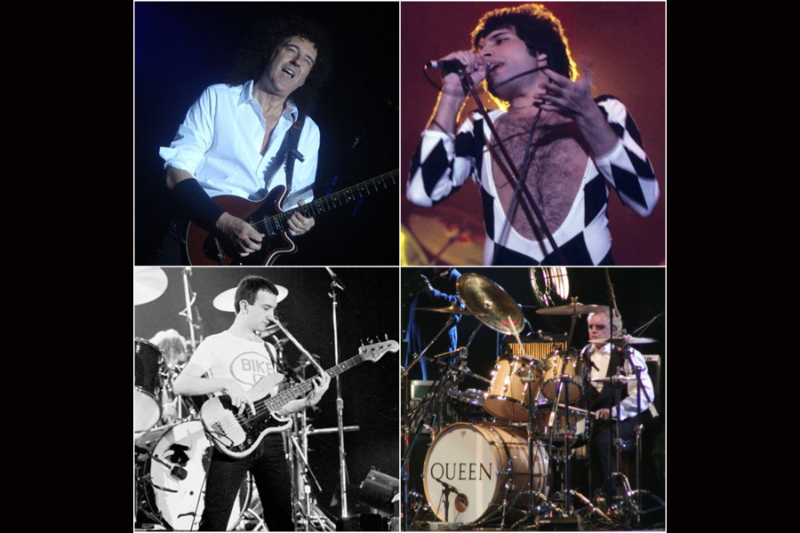A discussion that began in the RE/P Recording Forum here on ProSoundWeb that’s packed with useful/interesting points and references.
Question by kifaru
I’ve been brought a song to record that has a part in it that requires a chorus to sing part of it. The performer told me that what he had in mind for the part was a sound like the choral parts in “Bohemian Rhapsody” by Queen.
I’m really not sure how to achieve this sound and the performer does not have the money to hire a choir to do the part or an arrangement to give them if he did.
So here’s my question. Did Queen do the choral parts themselves and if so did they use any effects to achieve the sound?
I have a large church space to record the part in if it’s just four guys singing the harmony. However if not is there a way to achieve this effect with a few guys? I’m assuming that I’ll use no more than two mics: one for the room and one close for the choir. Any help would be appreciated.
Reply by Fletcher
From what I’ve heard, the vocals on “Bohemian Rhapsody” were all Freddy Mercury. All of it. Every voice, every harmony, everything that came out of a mouth came out of his… So you might want to explain to your client that he has about 40 vocal overdubs in his immediate future, and it’ll really help if he [or who ever gets the arduous task of singing on the project] has a great voice, and an excellent sense of harmony and vocal arrangements…
With a choir you end up with “You Can’t Always Get What You Want” — which may be the case anyway…
Reply by pricey
If memory serves, the liner notes say that the vocals on “Bohemian Rhapsody” are all four of them. It certainly doesn’t sound like one person. The key to that beautiful, glossy sound is:
1) EXTREMELY good pitch and timing
2) Massive overdubbing
3) A neutral, uncolored tracking room
After listening to “A Night at the Opera,” the Beatles and the Beach Boys sounded like crap in comparison!
Reply by rivers
I’m pretty sure most of those parts involve more than one voice but will require layers of overdubbing (not to mention talent) and many dedicated tracks (at least before some mixdown or reduction mix).
IMHO the Queen vocals can’t really be replicated with a “plugin” or simple doubling but usually requires triple or quadruple tracking of harmony parts AND the right arrangement to make it happen. All of this assumes talented vocalists and a engineer/producer that has an ear for vocal arrangement.
Long and short — it’s easy to do poorly and quite difficult to do well.
Reply by chrisj
I hear breathy compression on their stuff — is it me? I’d love to have more information on, say, the “Sheer Heart Attack” background vocals. Sometimes they get a peculiar edgy chime that’s like the Beatles got with out-of-phase combinations of mics.
It’s not just EQ doing it, or just compression. I keep thinking out-of-phase. They had to be savvy to this – Brian May’s guitar always had the capacity for out-of-phase pickups. Could it have been applied to vocals?
Reply by kifaru
I don’t think the young man has the bucks to achieve his vision, but I think I will subsidize his project because this has intrigued me. Let’s say that I am able to get the men’s chorale at my local university to donate their talents, how many mics do I use to record them and should I switch mics when doing the overdubs?
Reply by Fletcher
I think the biggest part of the thing is going to be to have the parts clearly defined. As for switching mics/pre’s and other elements of the recording chain, it usually makes it way easier to mix when you do.
Best of luck with it!
Reply by hiltonius
My money’s on Fletcher on this one. Here’s why:
Shortly after the untimely passing of Freddie Mercury, I had the honor to work on a Freddy Mercury track for the “Great Pretender” record. Our mission was to peel the vocals that had been recorded previously off multitrack and build a new track around them.
The opportunity to examine that legendary Queen vocal texture in this detail was appreciated by us all. Every single vocal on the song we worked on was quite obviously the voice of Freddy, and the overall texture (thick choral – you know, that Queen thing) sounded just like all that other stuff they did, including Bohemian Rhapsody. I think he had bounced (that’s right, bounced) all the finished vocals to an entire 24-track slave – there had to be upwards of 100 voices bounced together on that song.
The unfortunate title of the track we did was something on the order of “Time Waits for No One”, and was taken from some west end London show that he’d written it for (which, by the way, was produced – the show not the record – by Dave Clark. Yes, that Dave Clark from the Dave Clark 5).
Reply by slipperman
Call me crazy but…. No way, Jose.
Roger Taylor, Queen’s drummer, is the only guy in the band capable of hitting half of the Hi-D#(+) stuff on ANY of the Queen records bvox topology. If you guys dig around, I’m pretty sure you’re gonna find a ton of documentation to support that claim.
Freddy had a great voice and a decent “full voice” range, but a modest and maiden-feld falsetto. Roger had the “high” voice, hard and sharp/clear. This was common knowledge “back in the day.”




















